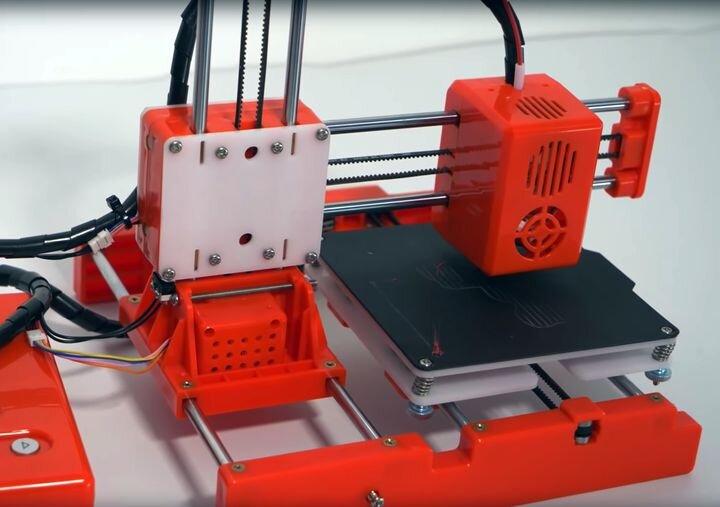![The Easythreed X1, an incredibly inexpensive 3D printer [Source: YouTube]](https://fabbaloo.com/wp-content/uploads/2020/05/image-asset_img_5eb08c0f14f6f.jpg)
I’m watching a video from 3DMN reviewing what might be the most inexpensive desktop 3D printer yet seen, and wondered what this could mean.
In the video the EasyThreed X1 is reviewed, and the most notable specification of this device is its price. In the video it’s stated as US$89, but when I looked it seems to have various prices depending on where you happen to be shopping. It is still available for US$89 at some online outlets.
This is indeed an incredibly low cost for an actual, functioning desktop 3D printer. In the video, reviewer Joseph Casha finds that the device can produce relatively decent 3D prints, in spite of the price and his initial skepticism.
Casha suggests that it’s suitable only as an introduction to 3D printing and serious operators will likely quickly move on to other more sophisticated 3D printers, and that’s easy to do if you spent only US$89 on the first device. I tend to agree with that assessment.
My thinking relates to how this device — and similarly low-priced alternatives — place in the trajectory of 3D printing equipment. There was a time not that long ago when the desktop equipment capable of producing similar quality output would have cost well over US$2,000, perhaps even US$3,000. Now the cost of that capability is well under US$100.
Even Lower Cost 3D Printers
It’s important to remember that this is a single moment in that long-term trajectory, with higher prices in the past and lower prices in the future. It may be hard to believe that 3D printers of the future may be priced even lower than US$89, but I believe this to eventually happen.
Eventually, it may be that the price of the 3D printer is LESS than the cost of a spool of material to use on it. If you don’t believe me, take a look at the economics of 2D paper printing and associated inks. That could be the kind of future we’re looking at in low-end 3D printing.
I anticipate that the lowest price point will eventually stabilize, perhaps as low as US$50, and go no lower. Then the competition will shift to features.
While today we see the Easythreed X1 has being only a basic machine with few advanced features, future low cost machines will gradually incorporate more features to attract business. That’s because there is a minimum cost to developing and selling a machine and if cost is no longer a significant differentiator, then something else — features — must be.
What then?
Future Low Cost 3D Printers
I believe that as the low-cost providers continue to add features, they will increasingly put pressure on more expensive equipment. As each feature is added to low-end equipment, the higher-end (or really, higher-priced) equipment will diminish in value.
Those intermediate-priced vendors will then have to do some significant innovation themselves, or find their markets eaten by the low cost providers.
In the end the overall price of 3D printing will be continually reduced, hopefully to the point where nearly anyone can afford the basic technology. Of course, there’s more to the cost equation than just the 3D printer, as materials, software and spare parts also come into play, but lowered cost is lowered cost.
A select few of those trying out these low cost devices will be captured by the magic of 3D printing and will move on to other more sophisticated machines, and that’s a good thing. In a way, these low cost options create more market for higher cost machines.
Via Easythreed (Hat tip to Benjamin)

